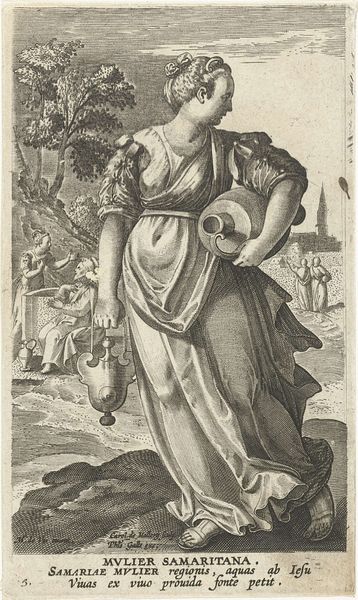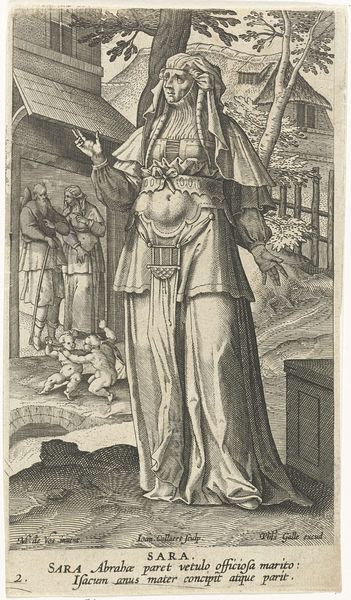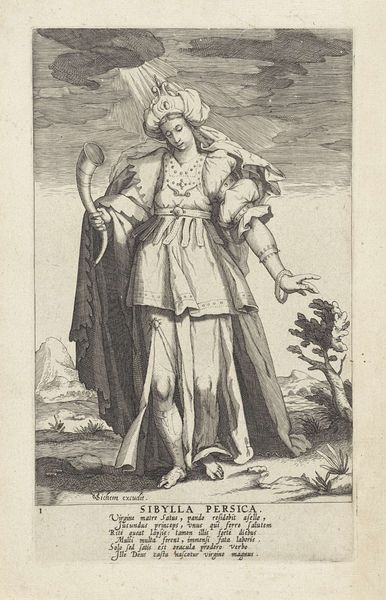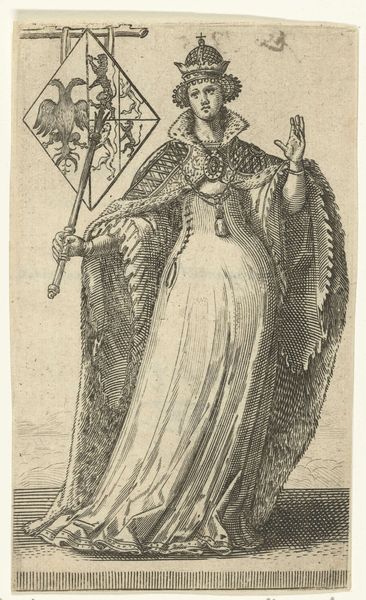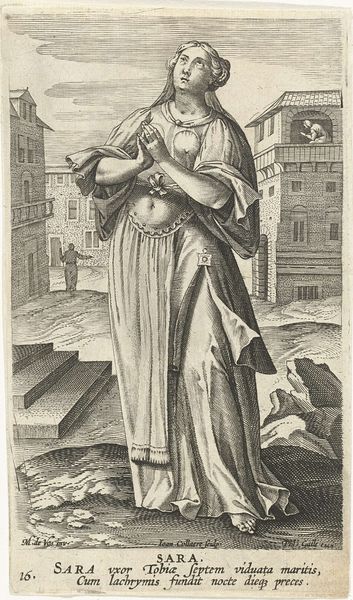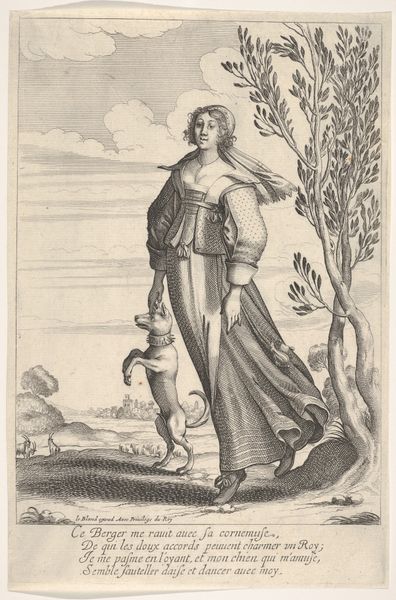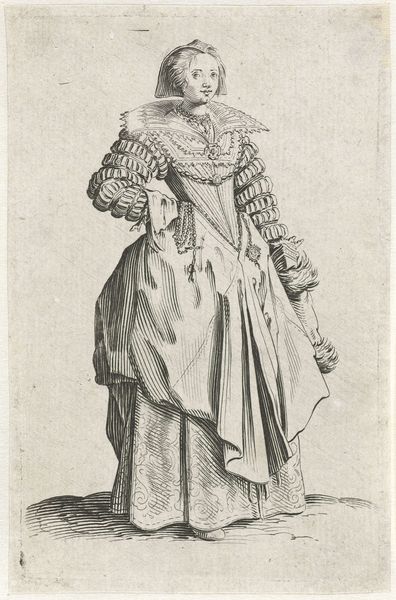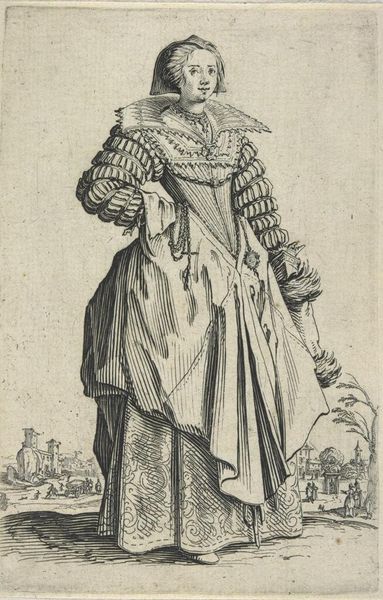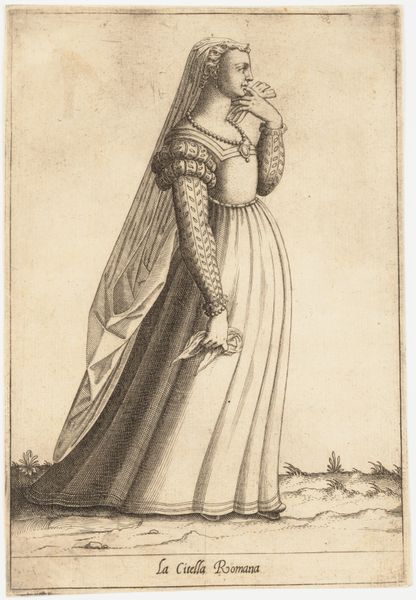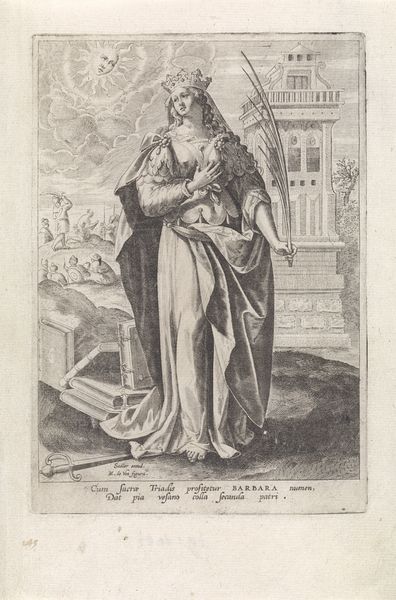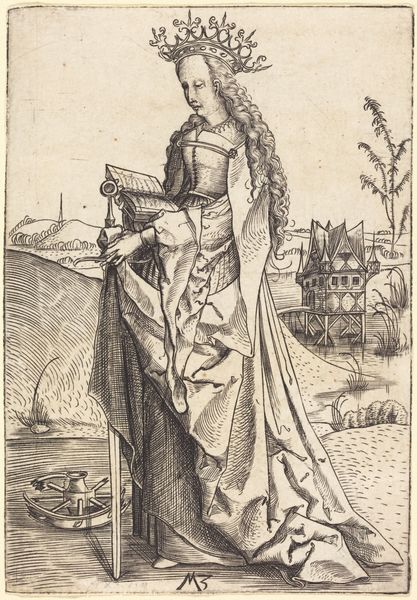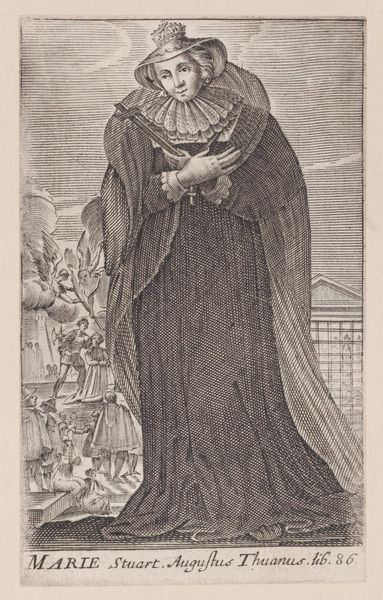
print, engraving
#
portrait
# print
#
old engraving style
#
mannerism
#
figuration
#
history-painting
#
engraving
Dimensions: height 159 mm, width 95 mm
Copyright: Rijks Museum: Open Domain
Editor: This is "Ester," an engraving by Jan (II) Collaert, dating back to sometime between 1588 and 1597. It’s interesting how Esther is depicted, seemingly wearing both armor and fine garments. What do you make of the materiality and context of this piece? Curator: Notice the detail achieved through engraving, a process demanding skilled labor. The contrast between Ester's regal bearing and her almost industrial-looking armor raises questions. Was this engraving meant for mass consumption, thereby democratizing access to religious narratives and challenging the exclusive patronage of the wealthy? How does the print medium affect our understanding of "high" art? Editor: I hadn't considered the democratizing effect of printmaking! It's true that engravings could reach a wider audience. But the subject, Queen Esther, seems aimed at a more educated or affluent group, maybe? Curator: Precisely. This interplay between subject and medium exposes tensions. Consider the economic conditions: who had access to these prints and what was the nature of labor to produce these. Are these prints promoting piety or social aspirations? Do they uphold or question social norms? Editor: So, the work, its value, is both artistic and as an accessible commodity during that time? It shows an evolution from unique pieces of art commissioned for the wealthy to art that, while intricate and skillful, could reach more people? Curator: Absolutely. And look at the materials: the paper, the ink, the metal plate used for engraving. The cost and availability of these resources further influenced its accessibility and dissemination. Understanding these material constraints unlocks a deeper understanding of its place in society. Editor: That makes me think differently about engravings of this period, understanding its value based on labour, social and economic contexts as much as aesthetic merit. Curator: Indeed. Shifting our focus to material conditions and production methods opens a new avenue for interpreting the artwork and the history it represents.
Comments
No comments
Be the first to comment and join the conversation on the ultimate creative platform.

